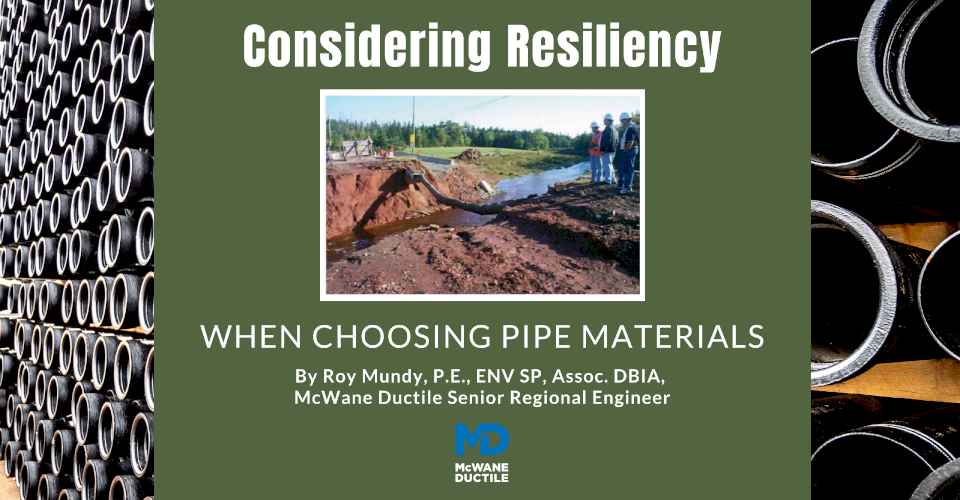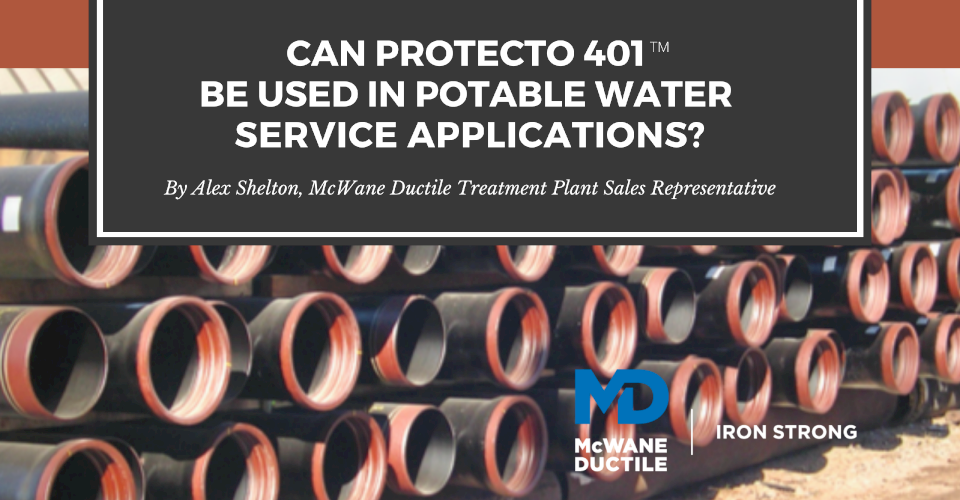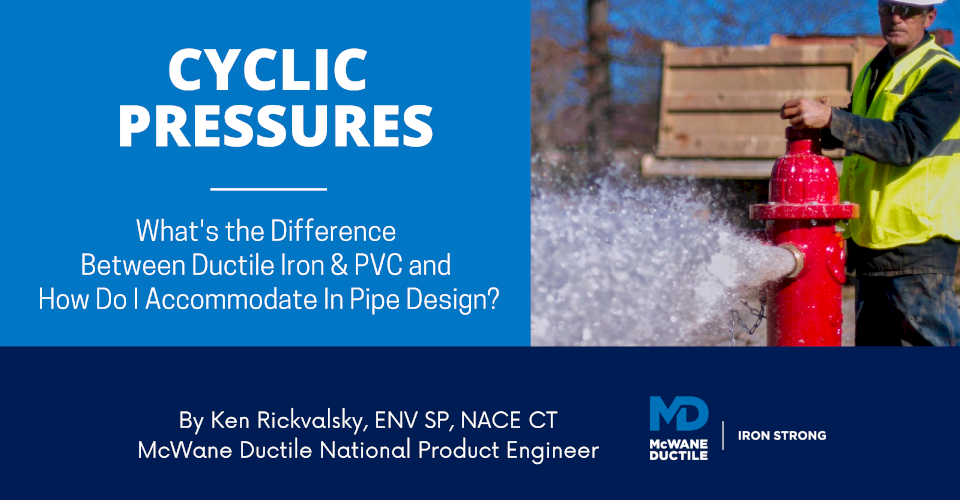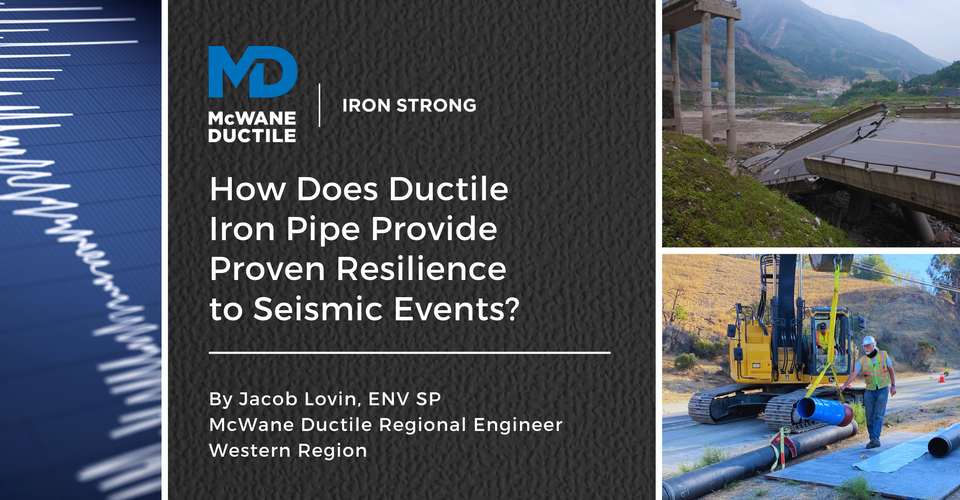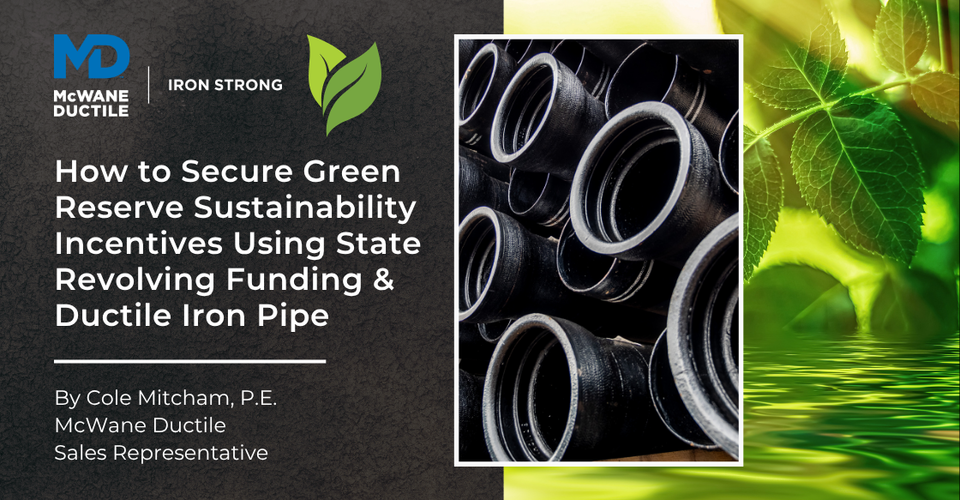-
Got Certification? Fabricated Ductile Iron Pipe and NSF/ANSI 61
06/10/2020 In Environmental & Safety TechnicalGot Certification? Does your fabricated Ductile iron pipe meet the current ANSI/AWWA C115 / A21.15-11 Standard for fabricated pipe?
Products intended for contact with potable water shall be certified to the requirements of NSF/ANSI 61. The certification shall be accomplished by a certification organization accredited by the American National Standards Institute (ANSI) AWWA Standard, ANSI/AWWA C115/A21.15-11 Section 4.1.2. This standard includes water service pipe, water distribution lines, water treatment plants (WTP), and commercial and industrial services lines.
-
Considering Resiliency When Choosing Pipe Materials
07/01/2020 In Environmental & Safety InstallationIn this third installment about Sustainability and Resiliency for our Iron Strong Blog, we are focusing on the resiliency of pipe and pipelines as a result of natural disasters such as storms, floods, and wildfires. While earthquakes and seismic events also need to be considered, much has been written on those aspects and we will discuss them in our next installment. Resiliency means many different things to many different people, and its definition is often a matter of perspective and need. Put simply, resiliency is the ability to survive, resist, or recover from damage due to some external hazard.
-
Can Protecto 401™ Be Used in Potable Water Service Applications?
07/10/2020 In Products TechnicalAfter being in the water and sewer industry for almost 15 years, I can safely say a question I hear frequently is “Can Protecto 401™ be used in potable water service applications?” And that is exactly what we are going to talk about in this Iron Strong Blog. We all know it when we see it, the pipe with the red bell and spigot. It sticks out like a sore thumb so that it can be noticed without any confusion. But where can it be used and what is its purpose?
-
What is the Purpose of Calcium Hypochlorite Granules?
03/20/2021 In Environmental & Safety TechnicalCalcium hypochlorite is an inorganic compound added in granular or tablet form added to water to kill germs that can make people sick. When used correctly, this compound destroys germs that can cause numerous health problems. ANSI/AWWA standard C651-14 incorporates essential procedures and requirements for the disinfection of new potable water mains. In this blog, we’ll cover why, when, and how it’s used in the waterworks industry.
-
Unaccounted for Water - The Phantom of the Forgotten City
04/16/2020 In Environmental & Safety TechnicalI have given several presentations wherein I have identified the distribution system of a water utility as The Forgotten City: Out of Sight, Out of Mind. Although the most significant capital investment for a water system is its pipeline infrastructure, many times, it gets less attention than other components such as pumps, motors, plant structures, pump stations, and even fire hydrants, all of which are visible to the eye. One mysterious component to some water utilities is Unaccounted for Water. Some say that, like death and taxes, Unaccounted for Water will always be present, with the only issue being the degree to which it pervades.
-
Should A Water Utility Manager Let System Infrastructure Dictate Water Treatment Methodology?
05/22/2020 In Environmental & SafetyProviding safe, clean water to customers of a water utility is unquestionably JOB ONE. Meeting this goal has always been a formidable challenge in many ways. Source water quality can change dramatically due to weather factors and other phenomena. Additionally, increasing drinking water standards throughout the years evidencing higher detection technology and more sophisticated medical research regarding the health effects of contaminants has required water systems in some cases to change treatment methodologies dramatically.
Should the pipeline material placed in a drinking water system in any way limit decisions of today or in the future regarding the water treatment methodology chosen to best provide safe, clean water to customers? I THINK NOT!
-
Cyclic Pressures - What's the Difference Between Ductile Iron & PVC and How Do I Accommodate In Pipe Design?
07/25/2020 In Products TechnicalThis entry in the Iron Strong Blog compares the performance of Ductile iron pipe (DI pipe) to Polyvinyl Chloride (PVC) pipe against cyclic pressure variations in piping systems. Cyclic loading, or more accurately, cyclic surges, is a phenomenon where pressures in a pipeline frequently vary due to changes in demand, operating conditions, storage tank levels, treatment plants, and pump starts and shutdowns. Surges can also occur during common field operations such as exercising or flushing fire hydrants or valves within the system, which can drastically change flow parameters, causing surges or water hammers.
-
Two Key Components of Water Systems Directly Related to Pipeline Material Selection
07/29/2022 In Products TechnicalThere are many "moving parts," as water professionals know, in the operation of a water system. The intricacies of not only supplying customers with a safe water supply but assuring that supply is adequate, including paramount necessities such as fire protection, many times create an ever-changing balance of key parameters within the water system. When the system operator affects such changes, there should be no concern by the operator regarding the transmission and distribution system to accommodate these changes. This article will highlight two system components that can be directly affected by material selected for system underground infrastructure.
-
The Challenge of COVID-19 to the Water Utility Manager — Past, Present, and Future
04/28/2021 In Environmental & SafetyDuring the decades in which I have managed large and small water utilities throughout the country, I have experienced several challenging scenarios. Whether it was a major oil spill in the river that provided our raw water supply, a winter with sub-zero temperatures and no snow cover where small water mains were frozen solid in the ground, or the total transitioning from a groundwater source to a surface water source with all the different treatment methodology involved, I had never considered the terminology “the new normal.”
-
How Does STEM Apply to Manufacturing Ductile Iron Pipe and Building Water Infrastructure?
11/08/2023 In Our Company Products TechnicalNovember 8 is National STEM/STEAM Day, highlighting the importance of Science, Technology, Engineering, Arts, and Mathematics in children’s education. The manufacturing of Ductile iron pipe (DI pipe) and constructing pipelines for water and wastewater infrastructure are complex processes that rely heavily on STEM principles. In this #IronStrong Blog, we will explore the intricate connections between these fields and their significance in ensuring safe and efficient water and wastewater management now and in the future.
Latest Posts
- Developing an Asset Management Plan for Your Future Utility or Engineering Organization 12/04/2025 In Comparisons Industry
- Can Joining Water Works Industry Organizations Help You Grow Professionally? 10/21/2025 In Careers WaterWorks
- How Does Ductile Iron Pipe Provide Proven Resilience to Seismic Events? 09/04/2025 In Products Resiliency Technical
- How to Secure Green Reserve Sustainability Incentives Using State Revolving Funding & Ductile Iron Pipe 07/29/2025 In Energy Products Technical


